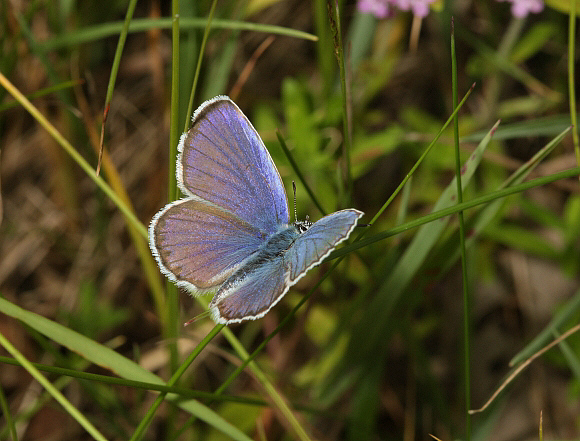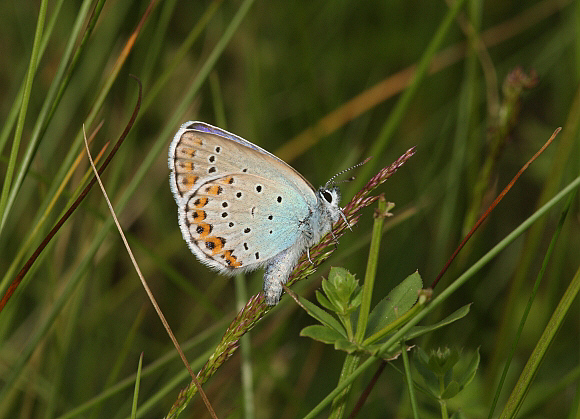 Plebejus idas, male, Hor valley, Hungary – Peter Bruce-Jones
Plebejus idas, male, Hor valley, Hungary – Peter Bruce-Jones
Introduction
Altogether there are about 70 Plejebus species, distributed variously across North America, Europe and temperate Asia.
The males of most species are metallic blue, while females are generally a dull earthy brown, with small orange submarginal lunules. Most species are small and delicate, and have narrow forewings. The undersides are marked with a distinctive pattern of white-ringed black spots, and the orange submarginal lunules are usually prominent, and often studded with a few reflective blue scales.
The commonest and most widely distributed species is idas which occurs in North America as well as in Europe and Asia.

Plebejus idas, male, Hor valley, Hungary – Peter Bruce-Jones
Habitats
This species breeds in almost any wild grassy habitats where the larval foodplants are abundant.
Lifecycle
The eggs are laid on the stems of Lotus corniculatus or rockrose Helianthemum chamaecistus, very close to the base of the plants. The eggs are always laid close to nests of the ant Lasius niger.
The larva develops within the egg in the late summer but doesn’t hatch until the following March. It feeds by day on the flowers and tender leaf tips of the foodplants. The larva is constantly attended by the ants which milk it to obtain a sugary substance exuded from an eversible gland on its back. In return the larva gains protection because the presence of ants deters predatory wasps, spiders and carnivorous bugs.
When ready to pupate, the larva is driven or carried into the ant’s nests. The pupa is attended by the ants until the butterfly is ready to emerge in late June or early July, at which time it crawls out of the nest and makes it’s way up a stem where it settles to expand and dry it’s wings.
Adult behaviour
Males often aggregate at the edges of puddles with other Polyommatines. Both sexes can be found in large numbers in hay meadows where they nectar a wide variety of flowers. The males flutter constantly in search of females and are easy to find but the earthy brown females are sedentary in behaviour and harder to locate. When the sexes meet, copulation takes place almost immediately, with no observable pre-nuptial ritual. Mated pairs can sometimes be found basking with wings in the characteristic three-quarters open position. They remain in copula for about an hour.
Overnight or in overcast weather conditions the butterflies roost amongst grasses or on bushes; adopting a head-downward posture. On sunny days the butterflies are active until sunset, and at certain sites can sometimes be found basking in groups of 30 or 40, congregating on bushes to soak up the last remnants of sunlight before going to roost or the night.
